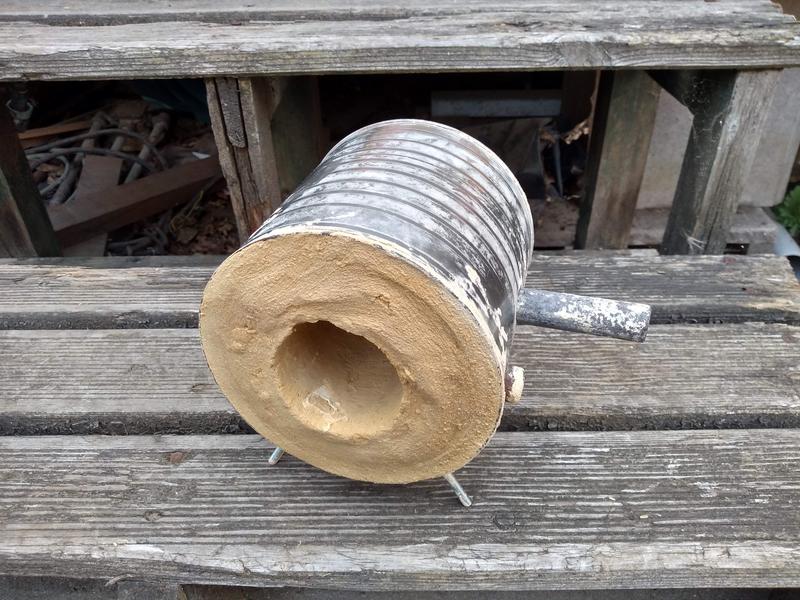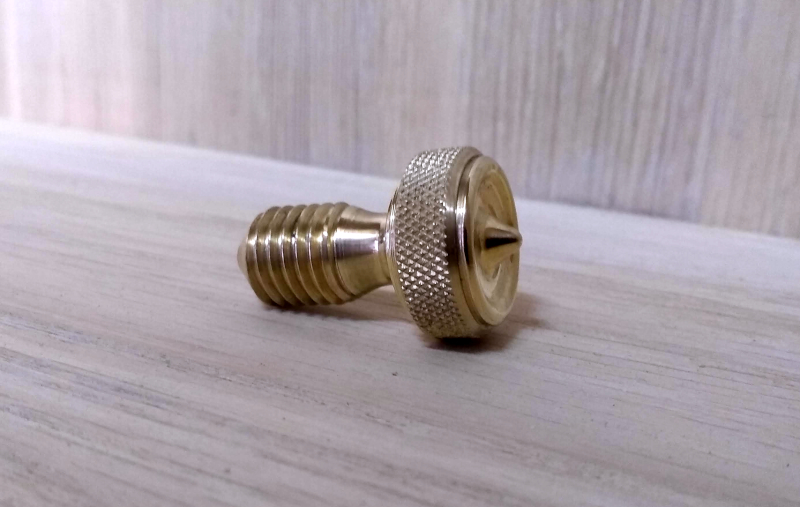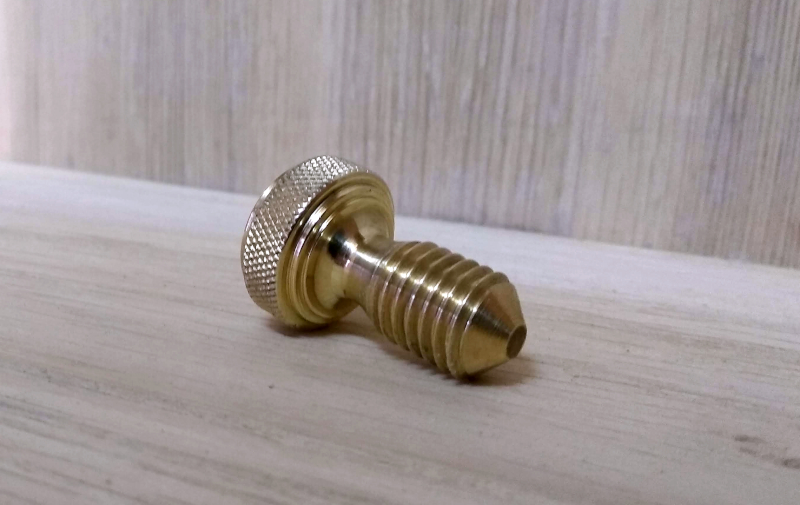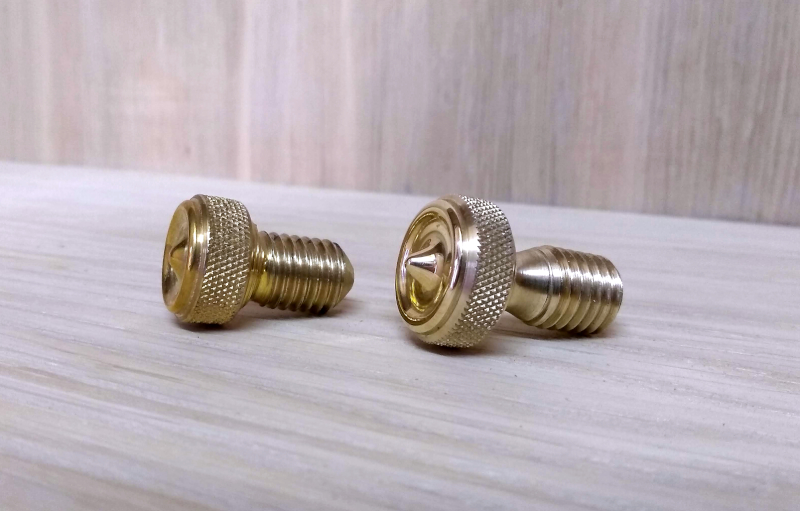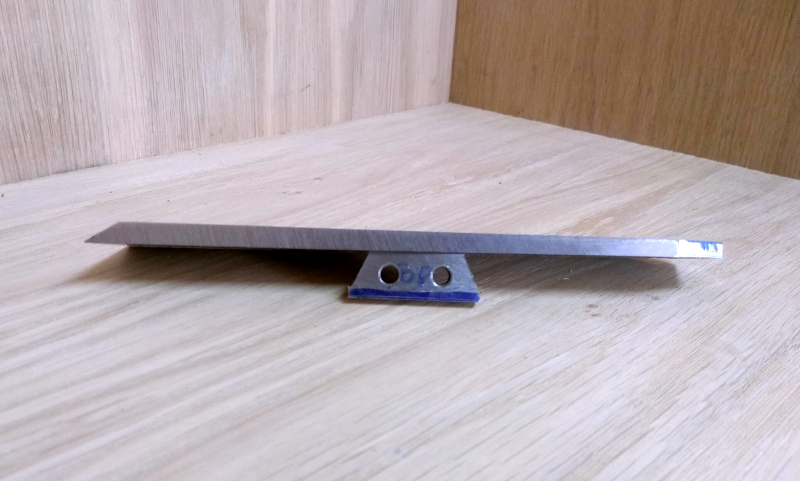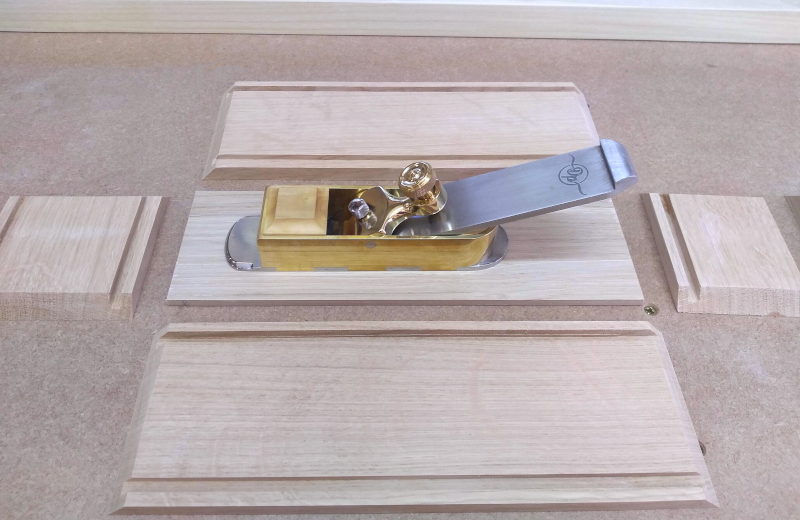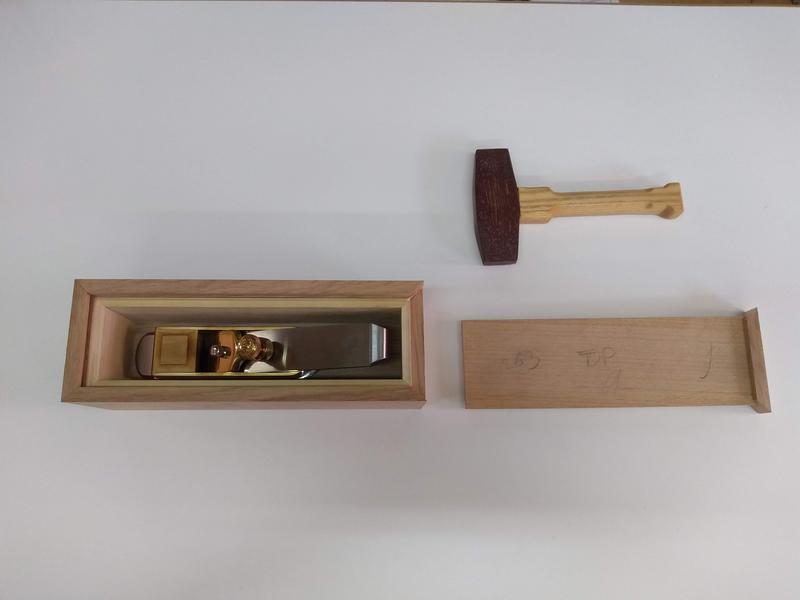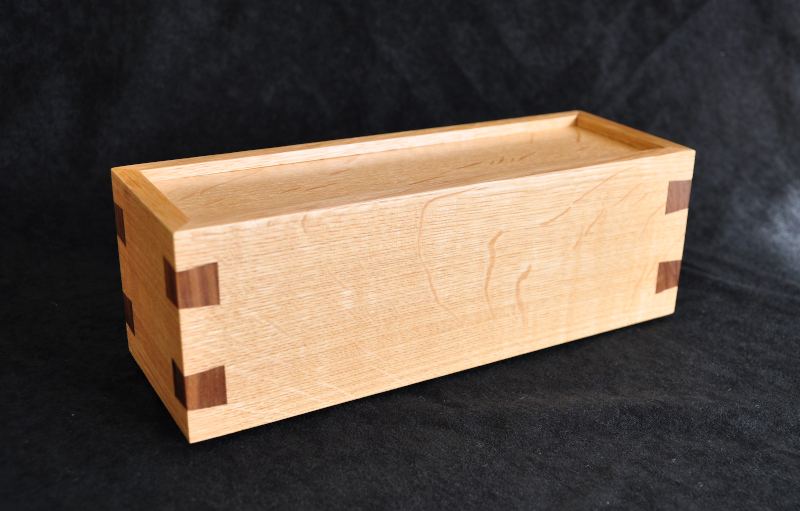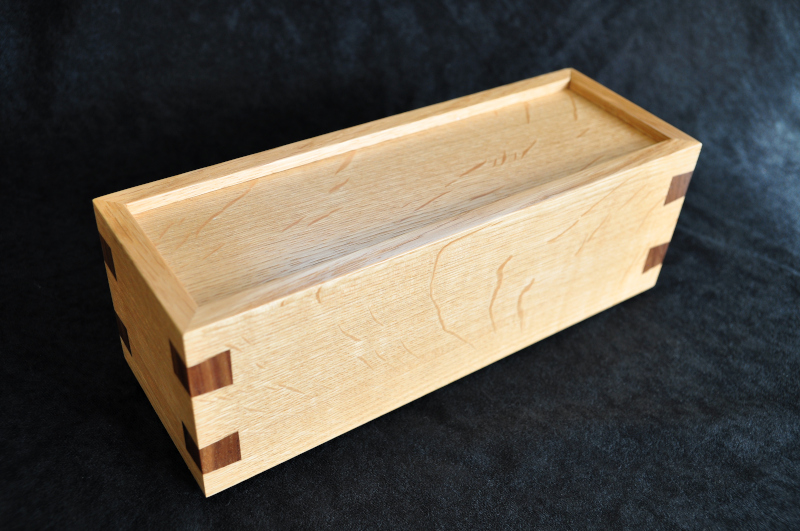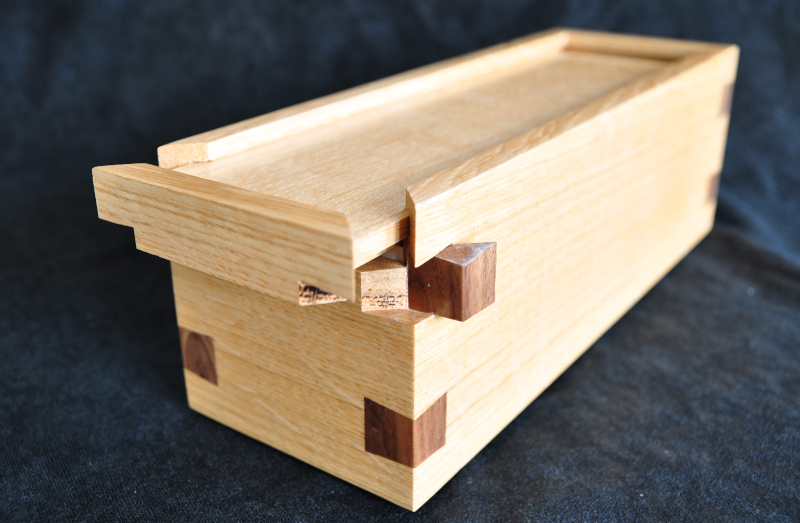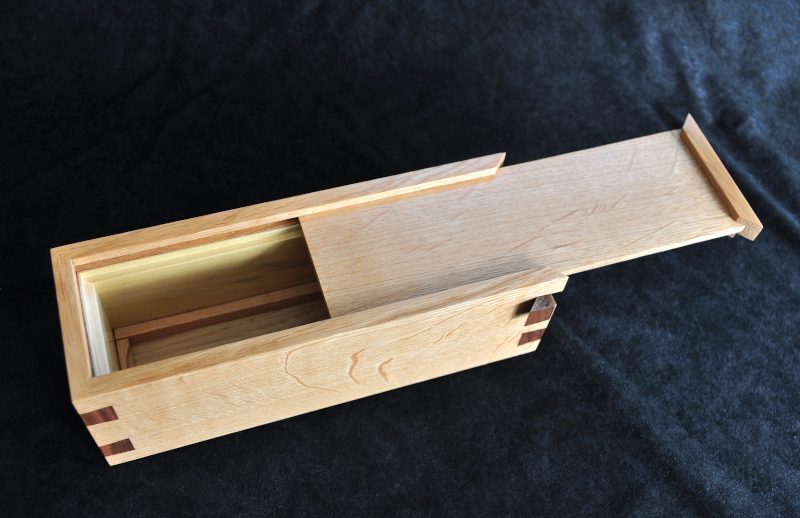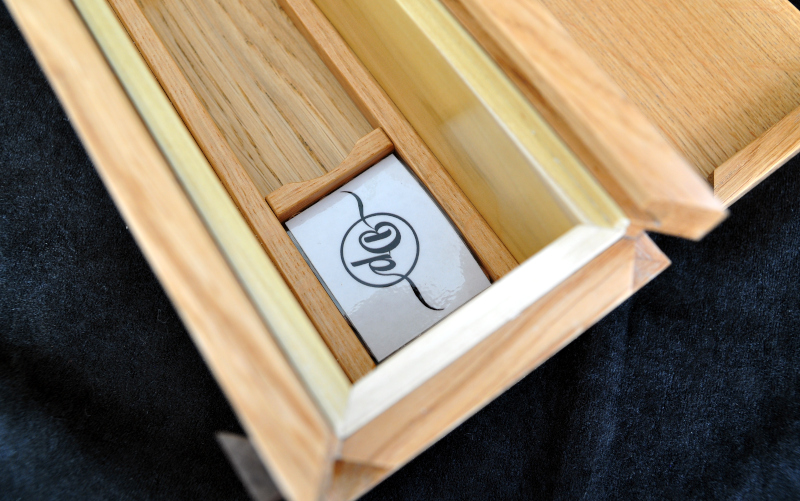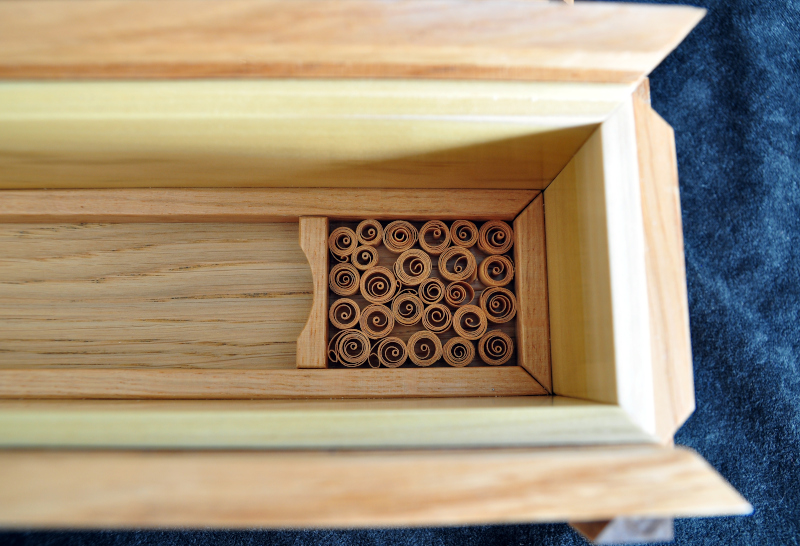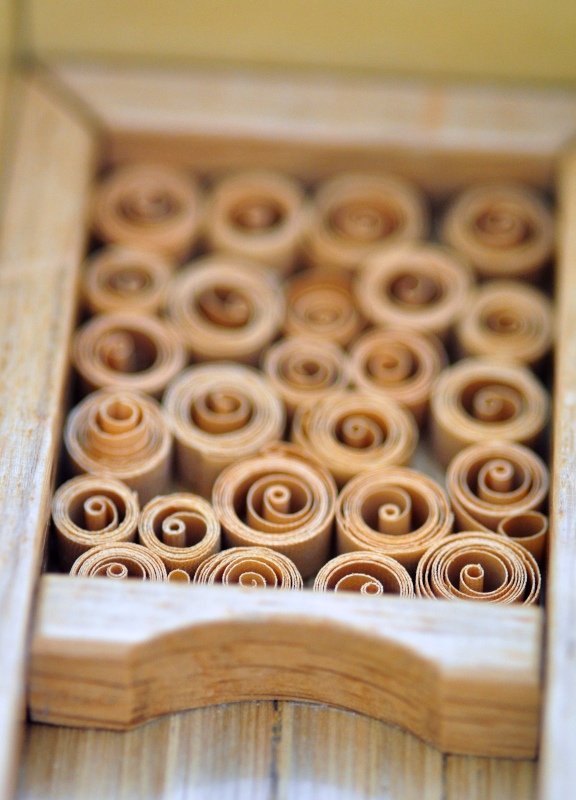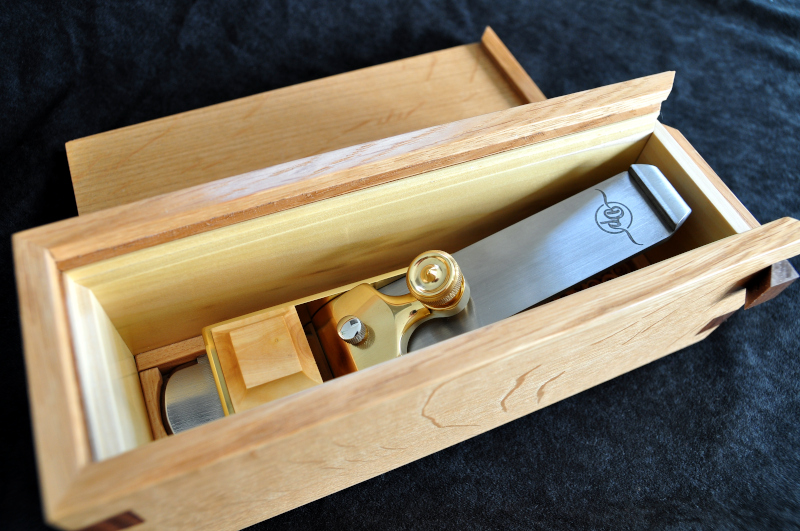I also screw lever caps in. I don't have a mill or a mill drill, just a cheap press (like really cheap - bench top, $150 or so). I have always located holes on infills and drilled from both sides. freehand (not with the press, but by eye with a cordless drill). the reason for this for me is probably different than most - if you are a hand tool woodworker, you can learn to see square and plumb very well, so I find usually only a tiny step where the holes meet, and my oldest planes now are 10 years old, and no ill effect.
But inability to drill across spans accurately leaves me using screws just as shown in the plane above - they are readily available, all you need is to be able to tap the lever cap and the need for precision drilling in the lever cap is relieved. Tuning the lever cap and bed to be tight and even on the iron so that the plane adjusts perfectly is also made a lot easier.
But inability to drill across spans accurately leaves me using screws just as shown in the plane above - they are readily available, all you need is to be able to tap the lever cap and the need for precision drilling in the lever cap is relieved. Tuning the lever cap and bed to be tight and even on the iron so that the plane adjusts perfectly is also made a lot easier.






